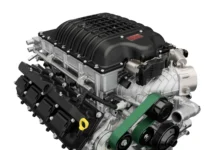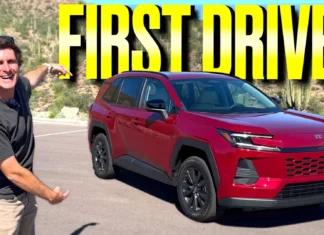A new executive order reportedly aims to lower tariff burdens on automakers.
Over the past month, automakers across the industry have scrambled to draw up an effective strategy to address the Trump administration’s 25% import duty on all vehicles brought into the United States. There’s been another issue in it, though, as there are also tariffs on parts used to produce new vehicles — even if those vehicles are assembled in America — as well as on raw materials including steel and aluminum, which are crucial to automotive manufacturing. Now, President Trump he will sign a new executive order that aims to lessen the blow on automakers producing vehicles domestically, the White House told reporters Tuesday.
Before today’s announcement, automakers noted Monday that they expected some sort of relief to materialize, ahead of Trump’s planned trip to Michigan to mark the first 100 days of his second administration. Global markets have largely been in a volatile state over the past several weeks, as it’s been broadly unclear how different countries and goods will be targeted, and to what extent, from week-to-week.
To address some of that volatility, administration officials told the media (as reported by Reuters) that automakers would not have to pay additional levies in paying the existing 25% tariff on imported vehicles. In other words, a company bringing in a new car wouldn’t have to pay that 25% duty, plus a duty on imported parts, plus a duty on any imported steel or aluminum used in manufacturing the final product. This new policy is retroactive, meaning the U.S. would reimburse so-called “double tariffs” that have already been paid out.
“This deal is a major victory for the President’s trade policy,” said Secretary of Commerce Howard Lutnick, “by rewarding companies who manufacture domestically, while providing runway to manufacturers who have expressed their commitment to invest in America and expand their domestic manufacturing.”
As of Tuesday morning, April 29, this new order has not gone into effect, and additional details on how the revisions will be rolled out, how the government would go about reimbursing companies (and in what time frame), and what impact they might have on new vehicle prices as a result remain unclear. Nevertheless, business leaders such as General Motors CEO Mary Barra and Ford CEO Jim Farley praised the forthcoming policy shift. Barra, for her part, said: “We believe the President’s leadership is helping level the playing field for companies like GM and allowing us to invest even more in the U.S. economy.”
The current situation among major automakers does call for a stronger sense of stability. At the same time Barra made her comments toward this updated tariff framework, GM CFO Paul Jacobson said the company “no longer has confidence in its 2025 guidance issued in January”, because of the unstable market conditions. Their former outlook assumed a growth year on 2024 wherein such rapid-fire economic policy changes wouldn’t upend the broader economy. That hasn’t been the case, so the company’s former financial outlook is effectively out the window.


























